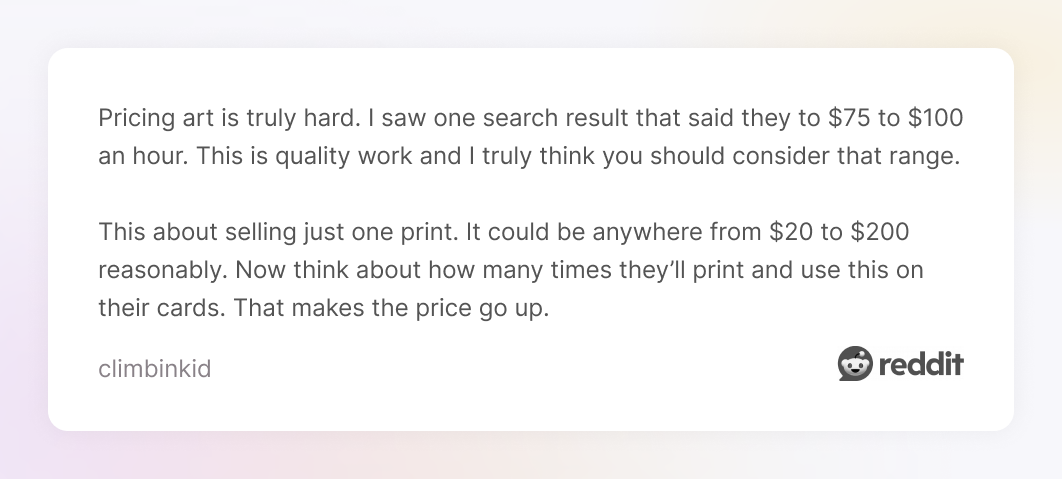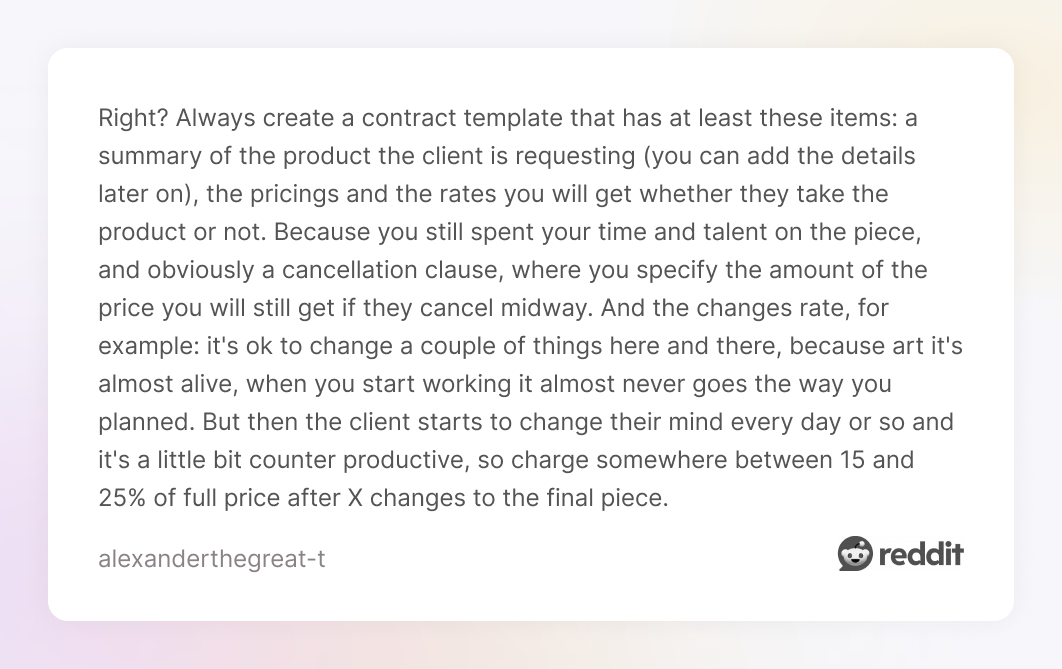How Much Do Illustrations Cost? Smart Budgeting Strategies


Illustrations are key to strong branding, but pricing them isn’t always straightforward. This article guide breaks down what affects illustration costs, from complexity and usage rights to pricing models, so you can budget smartly and avoid surprises.
It is a well-known fact that people prefer visuals over text-based media. 41% of marketers admit that original graphics like infographics and illustrations performed great for them. In the meantime, creating visual content is a rather time-consuming process, requiring about 10 hours of work. Plus, over 31% of marketers struggle to produce it consistently — just as many do when debating how many colors should a brand have.

Luckily, a diverse spectrum of illustration services is available today, ranging from logo design and digital campaign illustrations to business cards, custom letterheads, and more. Also, partnership options are wide, from hiring in-house designers to collaborating with freelancers, contractors, and design agencies experienced in email marketing design principles. For example, TodayMade is a design agency specializing in creating marketing designs only, including illustrations, eBooks, websites, presentations – you name it. This makes us a practical case study when you ask what is a marketing designer and what value they bring.
While there are many partnership options available, the only tricky questions are: how much do illustrations cost, and how do illustrators price their services? We’ll answer them later on. But first, let’s quickly overview the average illustrator cost.
Marketers spend about 30% of their budget on creating visual content, with 28% directly spent on design. That’s why it’s helpful to get a broader picture of typical illustrator pay rates and the potential profit well-executed illustrations can deliver, considering the freelance graphic designer vs agency choice.

To make a quick overview, we looked through job search websites and freelance work marketplaces like Upwork, Glassdoor, and Indeed, focusing on roles related to visual storytelling. Here are some common types of illustration services with their average costs:

Prices can vary significantly between markets and clients, making it tough to define a “standard” rate within the industry, especially in areas like brand visual identity. For example, a single editorial illustration might go for $150 at a small magazine, but could command $1,500 or more at top-tier outlets like The New Yorker, where prestige and wide readership drive up the worth. Broader distribution and extended usage terms give the artwork much higher value — something clearly reflected in the best infographic examples.
It’s similar to how licensing works in photography; the more visible and long-term the use, the more the creator should earn, especially for projects involving conceptual design. That’s why it’s critical to factor in not just the design effort, but also where and how the illustration will be used.
As you see, it's important to consider many factors like the level of detail required, the number of illustrations needed, and the experience of the illustrator when you budget for illustration. Let’s discuss them in more detail now.
Rates can vary due to many factors, including education, expertise and experience, location, and market conditions. Here are some of the most important factors that can influence the cost of illustration services:
There are so many variables that impact illustration pricing, from the medium and style to turnaround time, project scope, and usage rights. Even rough sketches created early in the process take time and input, and they should be factored in when evaluating how much work a project truly requires, including the effort behind creative presentation ideas.
As one artist put it on Reddit, "Pricing art is truly hard. I saw one search result that said they to $75 to $100 an hour. This is quality work and I truly think you should consider that range. This about selling just one print. It could be anywhere from $20 to $200 reasonably. Now think about how many times they'll print and use this on their cards. That makes the price go up."

Comparing illustration rates from other illustrators can give you a rough benchmark, but keep in mind that no two projects are alike. A seemingly simple piece like a single-page visual or spot illustration, or brand iconography may involve detailed revisions, client feedback loops, or tight branding requirements that significantly increase the workload. This is especially true when working with international clients, where expectations, timelines, and licensing terms can vary widely.
For example, a children’s book project might look straightforward but typically includes dozens of illustrations, consistent character styling, and iterative feedback, often under a short deadline. These factors add layers of complexity that should be reflected in your pricing.
That’s why illustrators need to price based on the full scope, not just the final image. Time spent on communication, planning, concept development, and revisions can quietly add hours that are easy to overlook. Including these in your estimate ensures you're fairly compensated for the real effort behind the scenes, something that becomes clear when looking at pop up examples.
And when it comes to negotiation, uncertainty about what to charge is common. Researching current trends in illustration rates across industries, such as editorial, tech, and advertising, gives you valuable advice and context to price your work competitively and professionally, especially for projects tied to a brand refresh.
The way you collaborate with an illustrator affects everything: cost, speed, and flexibility. Here’s a quick breakdown of common methods, plus some practical advice on when to use each.
Think of it as a mini course in choosing the right pricing illustration model for your project:
Note: It’s also common to sign a simple contract under this method, clearly outlining deliverables, deadlines, and usage rights, which helps avoid confusion or scope creep later on.

Still, many freelance illustrators rely on supplemental income. Even if illustration makes up 60% or more of their earnings, irregular work cycles and underpaid gigs often leave financial gaps. This is partly because clients don’t always understand what goes into creating custom art, from concept to delivery, compared with other services such as copywriting and graphic design, which creates a disconnect around pricing.
That’s where usage rights matter most, not just as a pricing component, but as a negotiation tool. When illustrators clearly explain usage rights, it helps justify their fees, set boundaries, and reduce the risk of scope creep. It also fosters trust and professionalism in the conversation.
If you’re unsure how to charge more, shift the focus to value. Ask yourself: Will the artwork appear only online, or also on packaging, ads, and merchandise? The broader the usage, the higher the rate should be. Educating your clients early helps them understand what they’re paying for and why.
One Redditor is sure that creating a contract template is a good practice, "...Always create a contract template that has at least these items: a summary of the product the client is requesting ( you can add the details later on ) the pricings and the rates you will get wether they take the product or not. Because you still spent your time and talent on the piece, and obviously a cancellation clause, where you specify the amount of the price you will still get if they cancel midway..."

All things considered, it’s tough to set a one-size-fits-all budget for illustration. A better approach? Have an open conversation with your illustrator about your goals and budget. Then work together to choose a pricing model that aligns with your timeline, usage, and expectations.
Illustrations are a proven tool that helps any company deliver messages and lets customers get the idea behind the product. In this regard, partnering with a talented illustrator can become your best business investment.
At the same time, more creatives are seeking practical ways to set fair rates, protect their time, and build sustainable careers. Understanding how to price and negotiate illustration work is a critical part of that journey and essential for long-term success.
TodayMade has brought together creative minds to free up marketing teams from design-related bottlenecks at reasonable prices. Our clients partner with us on a subscription basis when they need to get their marketing design done super fast at an unlimited scale. Our team of illustrators, graphic designers, and animators can handle multiple projects simultaneously and design any type of creative asset with minimal management effort on your side.
If you need to get your design done “for tomorrow”, then TodayMade is your partner.


